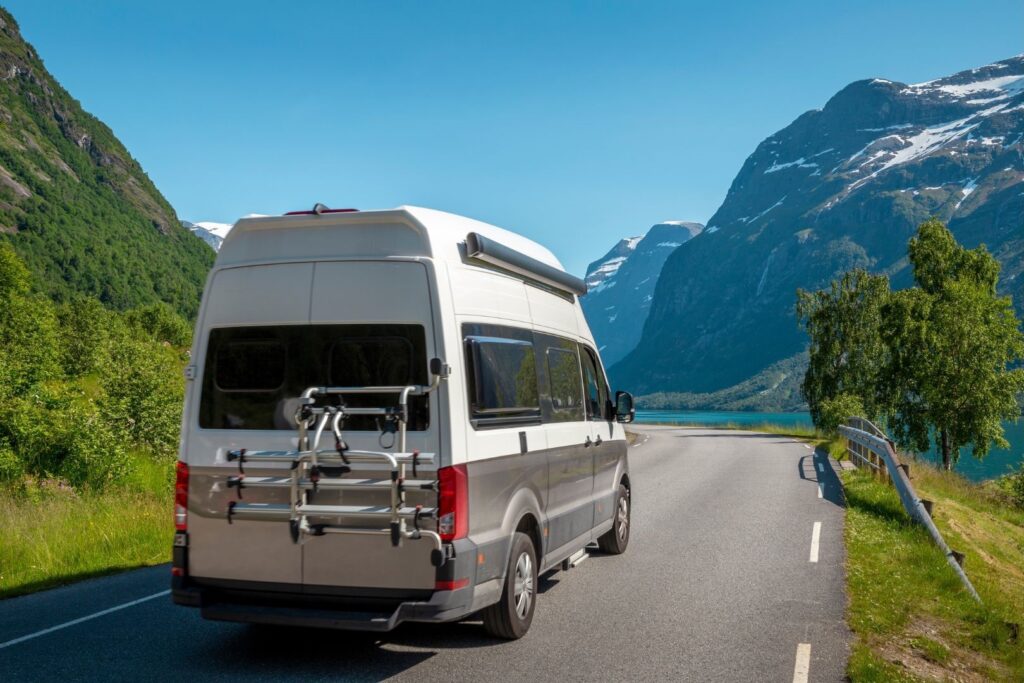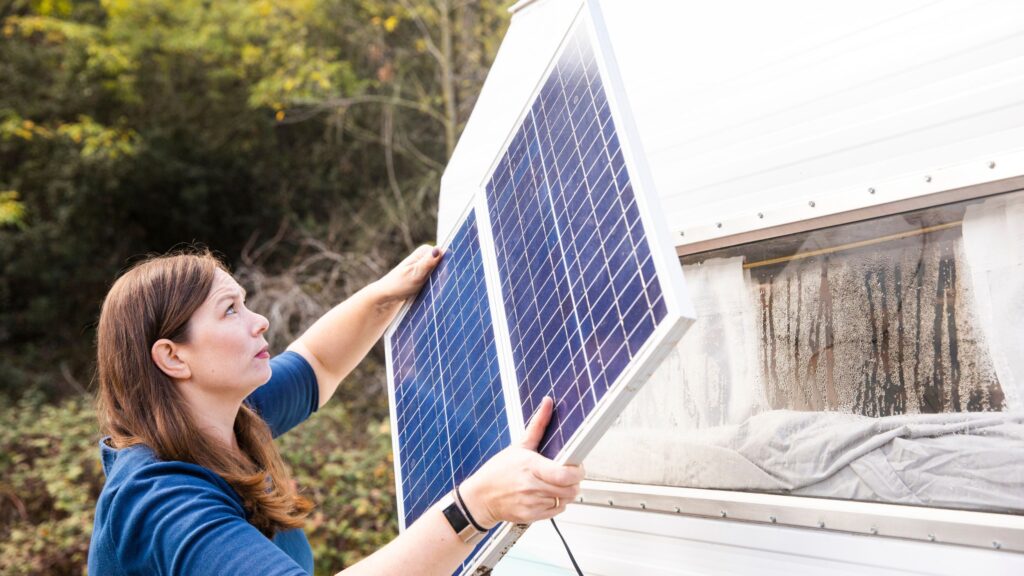So you’ve decided to build out your own camper van electrical system. Great! Building your own setup is a good idea if you want to understand every aspect of your camper electrical parts system in your van. It will also be useful down the road when something goes wrong and needs to be fixed.
If you’ve never wired up a camper van before, the process can seem daunting. What parts do you even need? In this article, we’ll walk you through all the necessary camper electrical parts and how they fit together to create your van’s complete electrical system.
Let’s get started.
Table of Contents
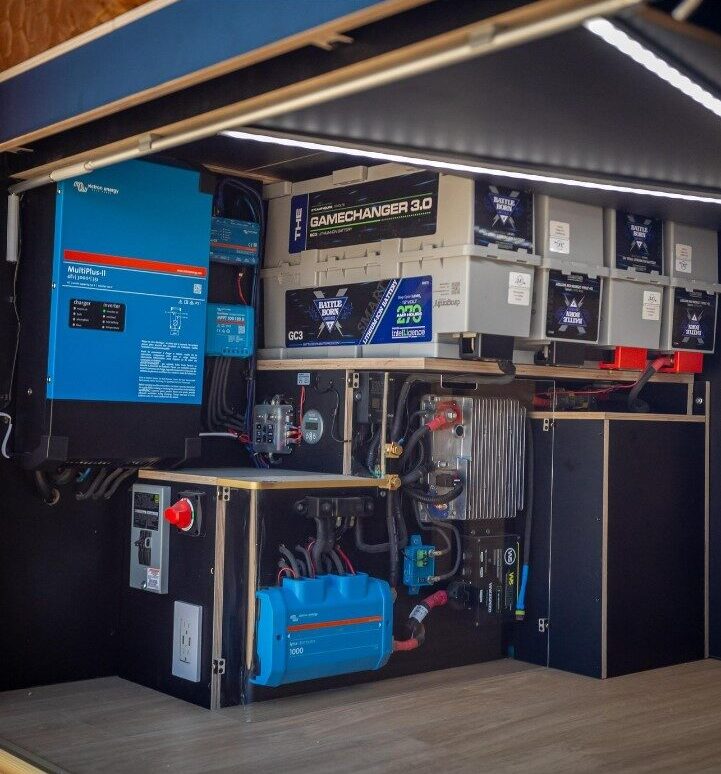
Batteries
Arguably, the most important part of your camper electrical parts system is the batteries. These store the energy you’ll use to power your AC and DC appliances and devices. The power you’re able to draw will depend on your total battery capacity – ideally, you want enough battery capacity for 2 full days of power usage.
There are two places you’ll find batteries in your van: the starter battery and the house battery bank. The starter battery starts the motor and isn’t part of the van’s DC and AC power grid – we’re just talking about the house batteries for the purposes of this article.
Lead Acid Batteries vs Lithium Batteries
These days, most people opt for lithium-ion over lead acid or AGM batteries. Lithium costs more upfront but is more efficient and has a longer lifespan, saving you money in the long run. Additionally, since you can discharge lithium batteries to their full capacity, you only need half the amount of batteries than you would with AGMs.
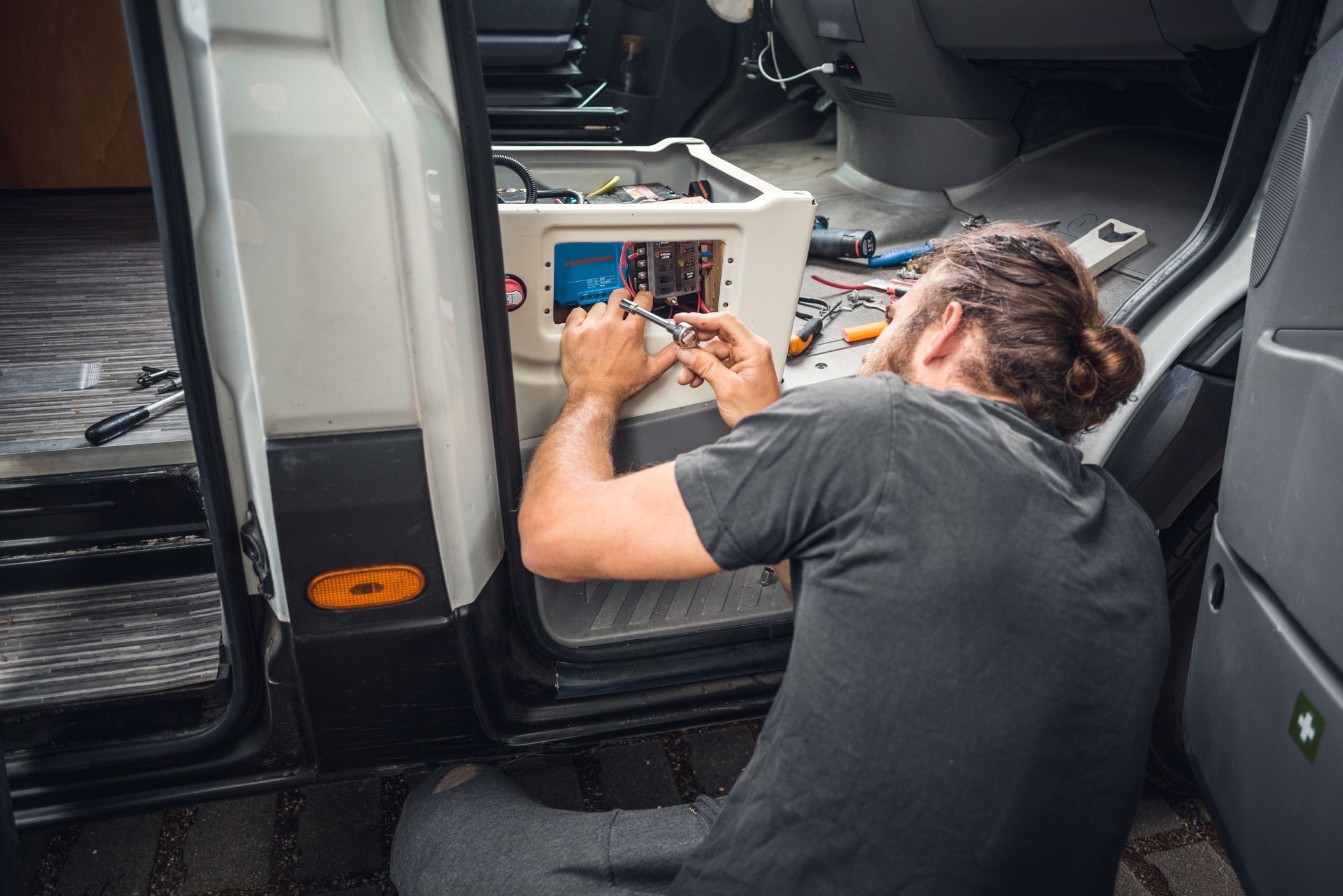
Battery Monitor
Your battery’s capacity needs to be monitored at all times. A monitor on your battery bank tells you what capacity the batteries are at and the voltage. It’s good to get into the habit of checking both of these things at least once a day to keep your camper van electrical system in good shape.
Solar Panels
If you spend a lot of time off grid, you’ll be heavily dependent on solar power as one of your primary charging sources. Solar panels harness energy from the sun and turn it into electricity, which can be stored in your batteries.
There are several types of solar panels and many ways to mount them on your van – flexible panels, rigid panels, and portable panels. The most commonly used type of solar panel for van life is a monocrystalline rigid panel mounted to the roof. This type of panel is fairly cheap, robust, and easy to install and maintain.
Solar Charge Controllers
A solar charge controller regulates the voltage and current coming into the battery bank from the solar panels. It prevents the battery from overcharging using MPPT (Maximum Point Power Tracking.) While a charge controller is not technically required between a solar power source and a battery, not using one can result in permanent damage to the batteries.
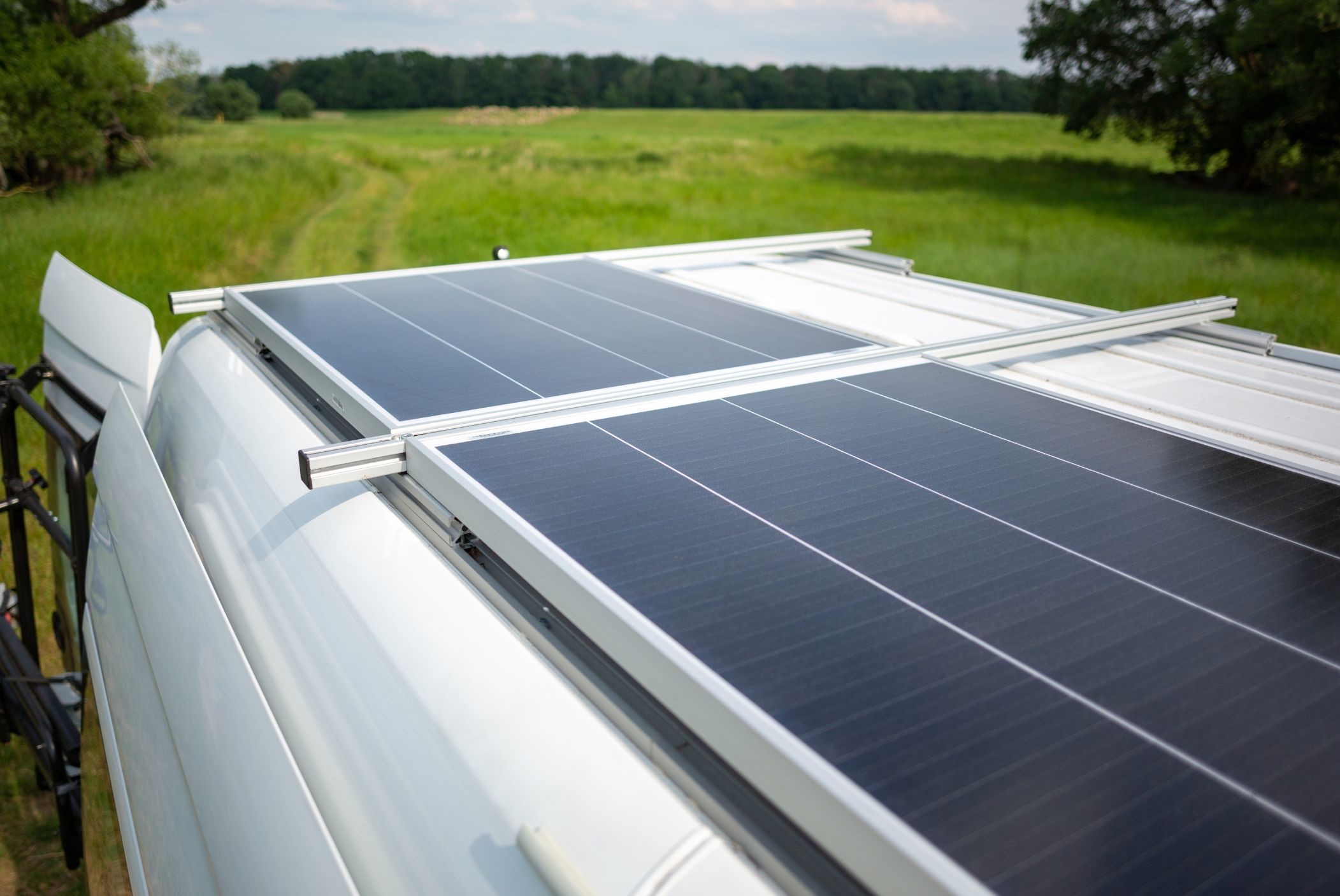
Inverter
Much of your van or RV power usage will be 12v (LED lights, the stereo, fridge, water heater, pumps, etc.) However, in order to power appliances and devices like laptops and phones, you will need to convert the 12v power to 120v. The inverter takes the 12v power put out by the batteries and turns it into 120v power.
While it’s possible to do this with power adapters plugged into 12v outlets, installing an inverter that provides power to 120v outlets is more efficient and makes your life easier.
Alternator Charger
The alternator converts mechanical energy from the engine into AC power. It can be used to run the electrical system in your van, or it can be used as a charger to charge the house batteries. An alternator charger optimizes the charge from the alternator and distributes it to the battery banks.
Shore Power
Even if you plan to spend the majority of your time off grid, it’s still a good idea to have a shore power hookup so you can draw power from campsite hookups or other 120v sources. Plugging into shore power every once in a while allows you to top up batteries if the voltage is getting low, or supplement your solar panel setup during winter months when peak sunlight hours are limited.
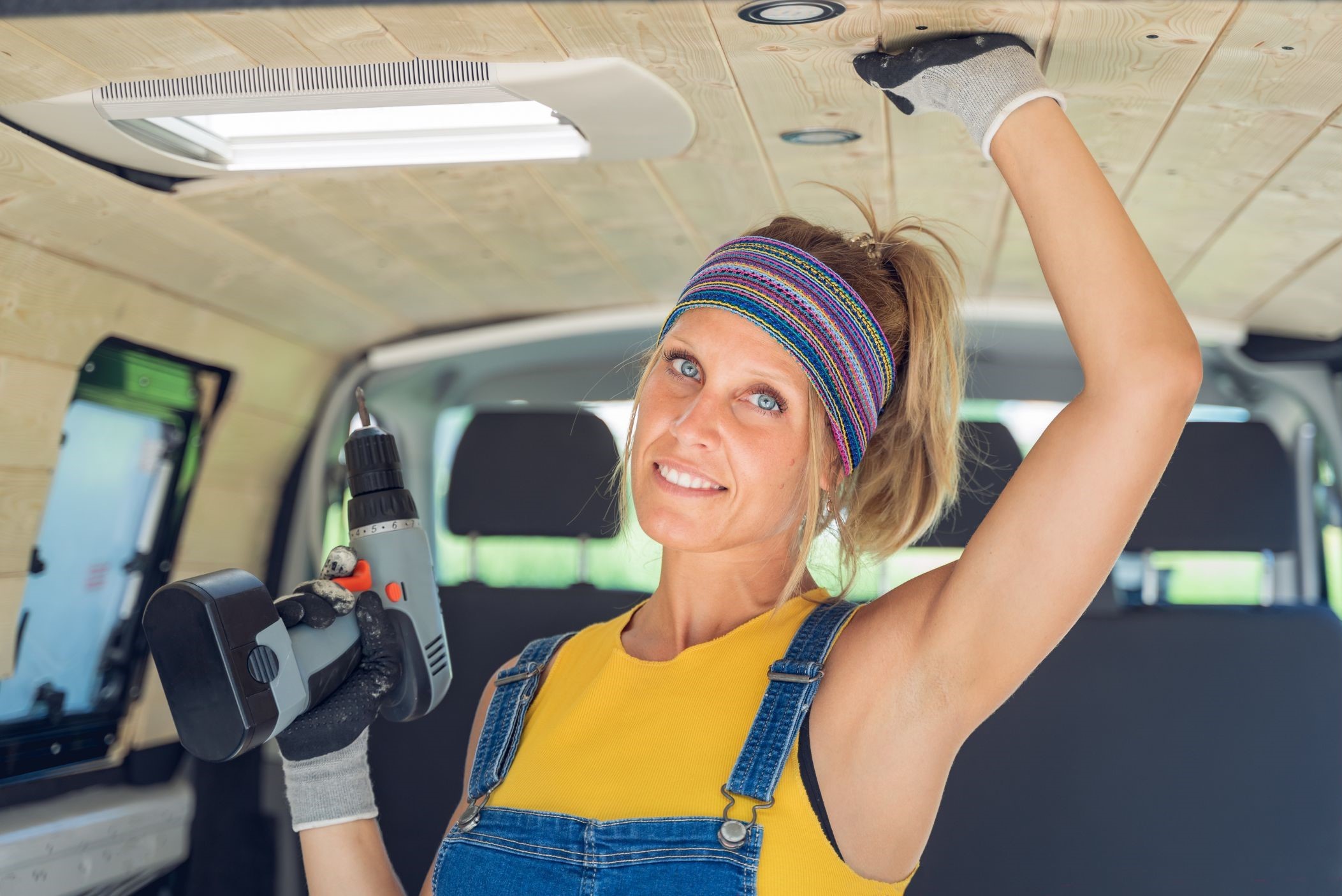
Breakers and Fuses
Fuses and breakers play an important role in your camper van electrical system: namely, preventing the current from going higher than what a wire can handle. They interrupt the current when it gets above a certain level, preventing fires and other electrical disasters.
The primary difference between a fuse and a breaker is that a fuse can be used only once, while breakers act more like on/off switches and can be tripped and reset over and over again.
Wires and Cables
Wires are not as exciting as solar panels and lithium-ion batteries, but they are a crucial part of your camper van electrical system and should not be overlooked. Choosing the right size wires or cables for your system could mean the difference between a properly functioning electrical system and an electrical fire.
Surge Guard
A surge guard is not a necessary piece of equipment in your camper electrical parts system, but it is nice to have if you plan to plug into power in places where the electricity is unreliable. Many remote campsites and places in other countries like Mexico frequently experience disruptions to their service that can result in major issues for your camper van if you don’t take precautions and protect your system with a surge protector.
Wiring Diagram
You should make a wiring diagram for your camper van electrical system. You may think you’ll be able to keep all the information in your head (and if you spend a lot of time working on the system, you might end up memorizing a lot of it), but having it written down somewhere will save you a lot of time and headache.
It also comes in handy if you ever need to explain the system to someone else (if you leave for a week and your significant other has to manage an issue, for example, or if you sell the van and want to make things easier for the next owner.)
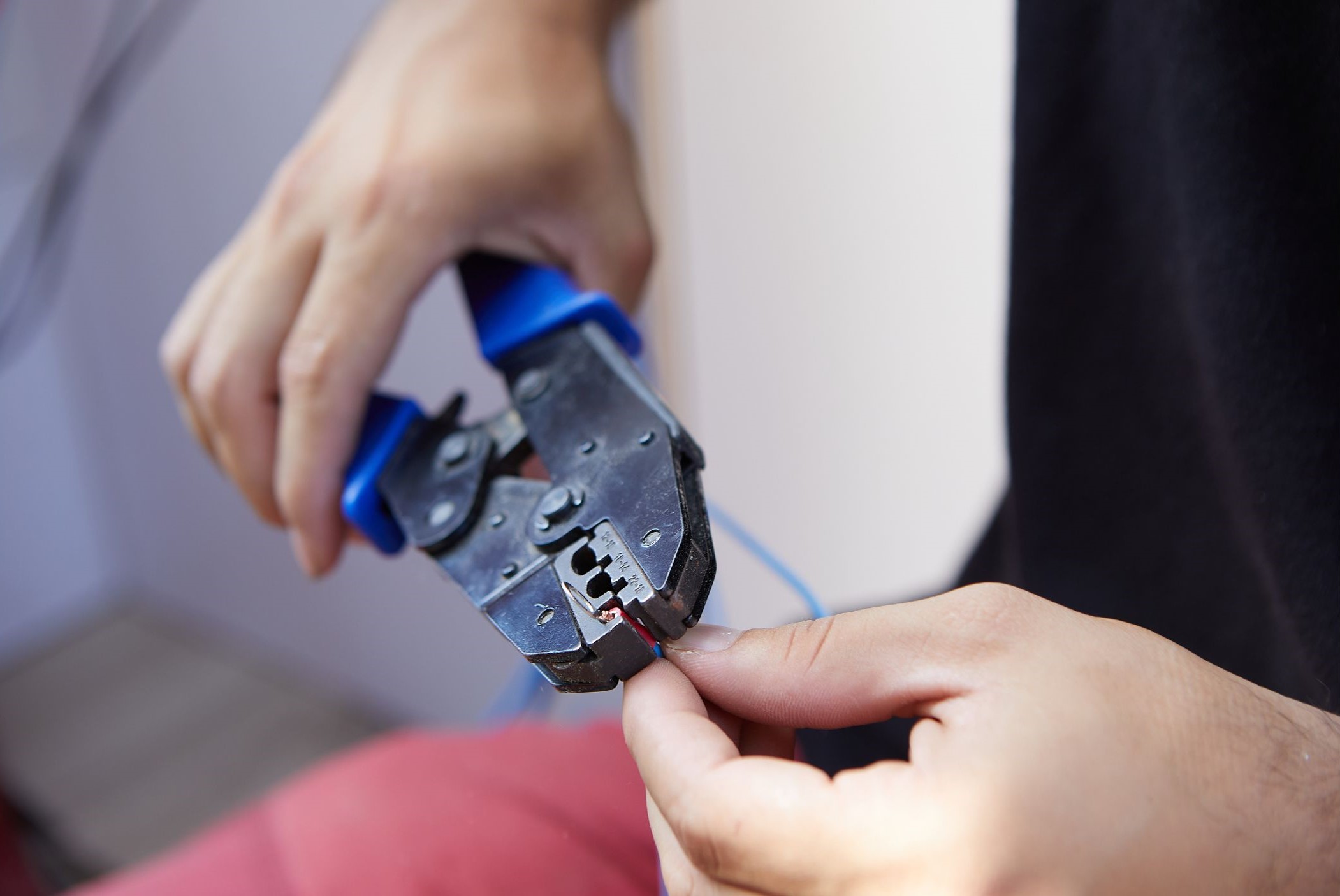
Summing Up
Overall, the most important parts of your RV or camper electrical parts system are the batteries, solar panels, alternator, charge controller, fuses and breakers, and properly sized wires. If sourcing and purchasing all the parts yourself sounds like an insurmountable task, consider buying a solar panel kit, which will come with panels, a charge controller, and usually with the correctly sized wires, fuses, and breakers. Some also include smart monitoring devices that let you check on the panels from your phone.
Your camper or RV electrical system is an important part of your van life experience. It can mean the difference between a good time and a cold, miserable one on your next trip.
FAQs
How does a camper van electrical system work?
A camper’s electricity is drawn from house batteries that store power from three primary battery chargers: solar power, the alternator, and external 120v power. The house batteries are separate from the vehicle’s starter battery.
When the vehicle is moving or the motor is running, appliances can draw power from the alternator (part of the motor.) Otherwise, appliances draw power from the batteries, which must be kept charged by inputting energy harnessed by solar panels. If the vehicle has a shore power hookup, power usage can come from an external 120v supply (at a campsite hookup, for example.)
What solar accessories do I need for my RV electrical system?
The only solar components you need for an RV power setup are solar panels, a solar charge controller, and the wires/cables/fuses and breakers to connect them to your battery bank.
What type of battery should I use for my van?
We recommend lithium-ion batteries for your house battery bank. While they cost more upfront, they have a longer lifespan and much higher efficiency, meaning you’ll save money in the long run.
If you can’t afford the initial investment of lithium-ion, led acid batteries will be a good second choice.
